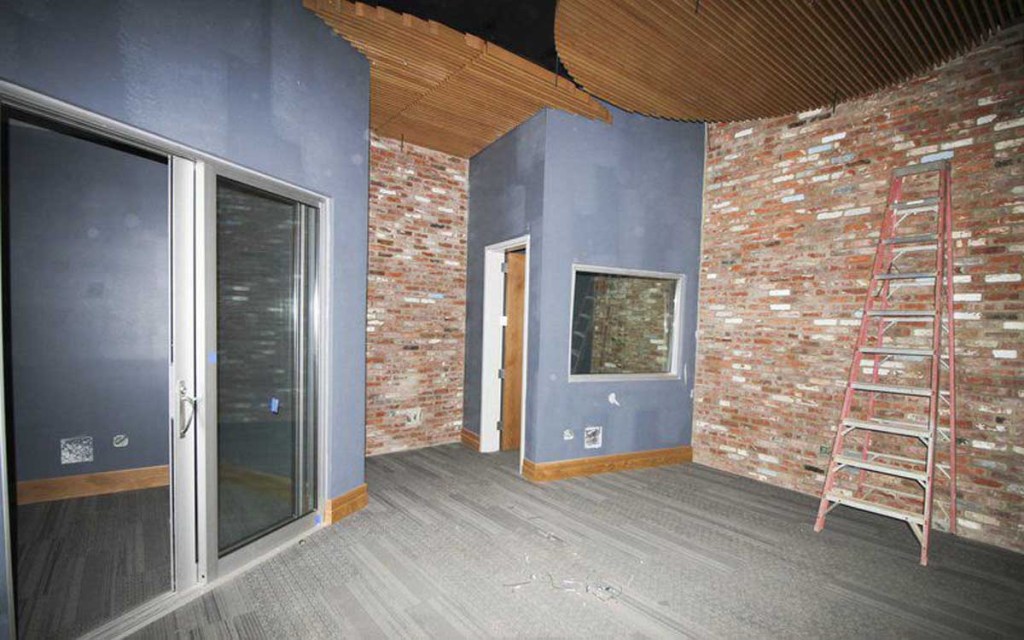The MAX brings Mississippi arts, entertainment to masses
Published 12:06 am Sunday, March 4, 2018

- Photo by Paula Merritt / The Meridian StarThe recording studio at the Mississippi Arts and Entertainment Experience.
Mississippi hasn’t been an easy place to live for many musicians, artists, actors and other creative types who went off and made an international name for themselves with uniqueness, creativity and tenacity that helped them survive early years of their native land.
Some of our state’s greatest names in arts and entertainment faced discrimination, extreme hardship, fits of self doubt, and armies of naysayers who tried to plant seeds of doubt in their abilities, to convince them they couldn’t make it work and should just give it a rest.
Trending
But their visions shined too bright to allow anything or anyone block their efforts to let the world see, hear and experience stories they had to tell through a variety of mediums.
Much of this could also be said of the Mississippi Arts + Entertainment Experience, set to open in downtown Meridian in late April, more than a dozen years after the concept was conceived.
Expansive plans originally located the museum at Bonita Lakes, but Hurricane Katrina recovery efforts stole a chunk of state funding away from the project that includes state taxpayers paying for building and property costs. Now located downtown, about 2 1/2 miles away, the museum intends to welcome people to Mississippi’s colorful, award-winning, internationally known, heartbreaking and addicting encyclopedia of arts and entertainment.
After enduring a struggle of its own, construction and exhibits for the facility known as the MAX will cost just less than $50 million. MAX President and CEO Mark Tullos makes lofty promises for the public-private partnership effort, including an attendance goal of 150,000 visitors to the museum during the first 12 months of opening.
As bricks continue to pile up on the building’s exterior at 2155 Front St., crickets of naysayers continue to chirp about the facility. Stretches of former parking spaces closed for construction and sections of street lanes don’t help win over grumbling skeptics whose morning commutes longer.
Tullos and others associated with the MAX acknowledge skeptics who question the new museum’s ability to draw nearly four times Meridian’s population into the doors on an annual basis.
Trending
He also knows what will greet the visitors inside the museum that he hesitates to simply call a museum. He and others use the phrase “interactive experience” often when describing the interconnected blend of technology and exhibits.
Immersive experiences
“Other museums that have immersive experiences can’t hold a candle to this,” Tullos said recently, sitting in his temporary office on Front Street across from the MAX.
Tullos speaks of museum visitors taking a siting in a physical boat and taking a virtual tour of the Mississippi Gulf Coast to barrier islands, entering a church made from wood from a Collinsville church damaged from a tornado, watching stories projected onto a clothesline close to a house.
Museum attendees will walk to a writer’s desk and hear audio of best-selling author and former Mississippi state representative John Grisham discuss his writing process.
MAX visitors will have opportunities to paint virtual masterpieces that would have made Walter Anderson envious and then share them on Facebook. They will have a chance to fire up a virtual kiln and shape pottery like George Ohr did and then Tweet it to their social media network.
The museum will allow people to hear mashups of Mississippi musicians who lived during different time periods play together like a Fantasy Football league of blues, country, rock and roll, and Americana.
Cybelle Jones, executive director of Maryland-based Gallagher & Associates, has a portfolio of planning, design and implementation of museum and cultural experiences including the College Football Hall of Fame in Atlanta; The National Archives Museum and White House visitor center in Washington, D.C.; The National Blues Museum in St. Louis and Grammy Museum Mississippi in Cleveland. The company has also partnered to help create the interactive experience for the MAX. Jones said people should expect something different from a typical museum experience at the soon-to-open Meridian site.
“We purposefully designed it for people who are not necessarily museum goers,” she said. “We really made an effort to make the artistic process accessible and human.”
An honest story
The front entrance to the MAX will lead the Hall of Fame, currently a roster of 18 musicians, artists, actors, producers and other performers who were born or had significant experiences in Mississippi, including Meridian’s own father of country music Jimmie Rodgers and acclaimed actress and philanthropist Sela Ward.
While experiences at the museum are intended to be fun and entertaining, Tullos said researchers for the exhibits made a point to remain faithful to the truth, even when describing the painful experiences of the artists related to institutionalized discrimination and other stains in Mississippi’s history.
“We want to tell an honest story,” Tullos said. “A lot of these people were artists because they had struggles to overcome.”
The museum has galleries divided by the environments and influences that helped form childhood experiences of the woman simply known as Oprah and the creator of Kermit the Frog, also a Mississippi native (both the frog and Jim Henson). Exhibits take visitors through tours of the physical landscapes, neighborhoods, juke joints, schools, homes and churches found scattered throughout the state, from the flatlands of the Delta to the shores of the Gulf Coast.
It will also have plenty of traditional artifacts, from a moonshine jug from the time of bootleg liquor to a Sela Ward Emmy for her leading actress role in the NBC series “Sisters.”
Researchers, curators, designers and others associated with MAX say the museum is intended to serve as a starting point to explore the entire state of history, culture, arts and entertainment in Mississippi. It also has a role for the community and up-and-coming artists and musicians.
Community interest
The facility is expected to host panel discussions, lectures, concerts, and other community events. It will also have a recording and art studios for artists still working to make a name for themselves.
Efforts in the educational experience also involves musicians and performers who aren’t necessarily household names to the general public.
“We’re really showing the breadth of artists connected to Mississippi,” Jones said. “Not just the famous artists.”
This includes artistic contributions from Native Americans, folk singers and gospel groups.
The outside of the facility will also include an amphitheater for concerts and other performances.
Tupelo-native Americana singer, songwriter and outsider artist Paul Thorn will headline the first concert at the facility on May 5.
The general public will have a chance to tour the MAX on April 29, two days after a black-tie gala celebrating the milestone opening.
As the countdown to opening day gets closer, community interest has intensified.
Darla Welch, general manager at Brickhaus restaurant on Front Street, stands and watches progress daily from the doorway of the business connecting to an outside area facing the MAX. She hopes downtown Meridian businesses prepare for the expected increase in foot traffic in the area.
“I’m hoping it does a quarter of what it’s predicting,” she said recently. “That would be huge for downtown.”
She talks of more customers for existing businesses and potential for a coffee shop, bakery and other places for people looking for food and drink after learning about B.B. King and William Faulkner.
Talk has continued to swirl downtown about what could emerge with the major cultural addition. Jamie Cater, owner of Cater’s Market in the Meridian, said she jumped on the bandwagon as an early supporter of the museum, believing in potential for what it can bring to the community.
With Meridian’s position between major metropolitan destinations of Birmingham, New Orleans, and Atlanta on interstates 20 and 59, Cater believes many visitors to the MAX will have out-of-state license plates. This is a key part of the strategy to draw visitors to the museum.
“We’re going to get them to pull off the interstate and spend some money here,” she said.






